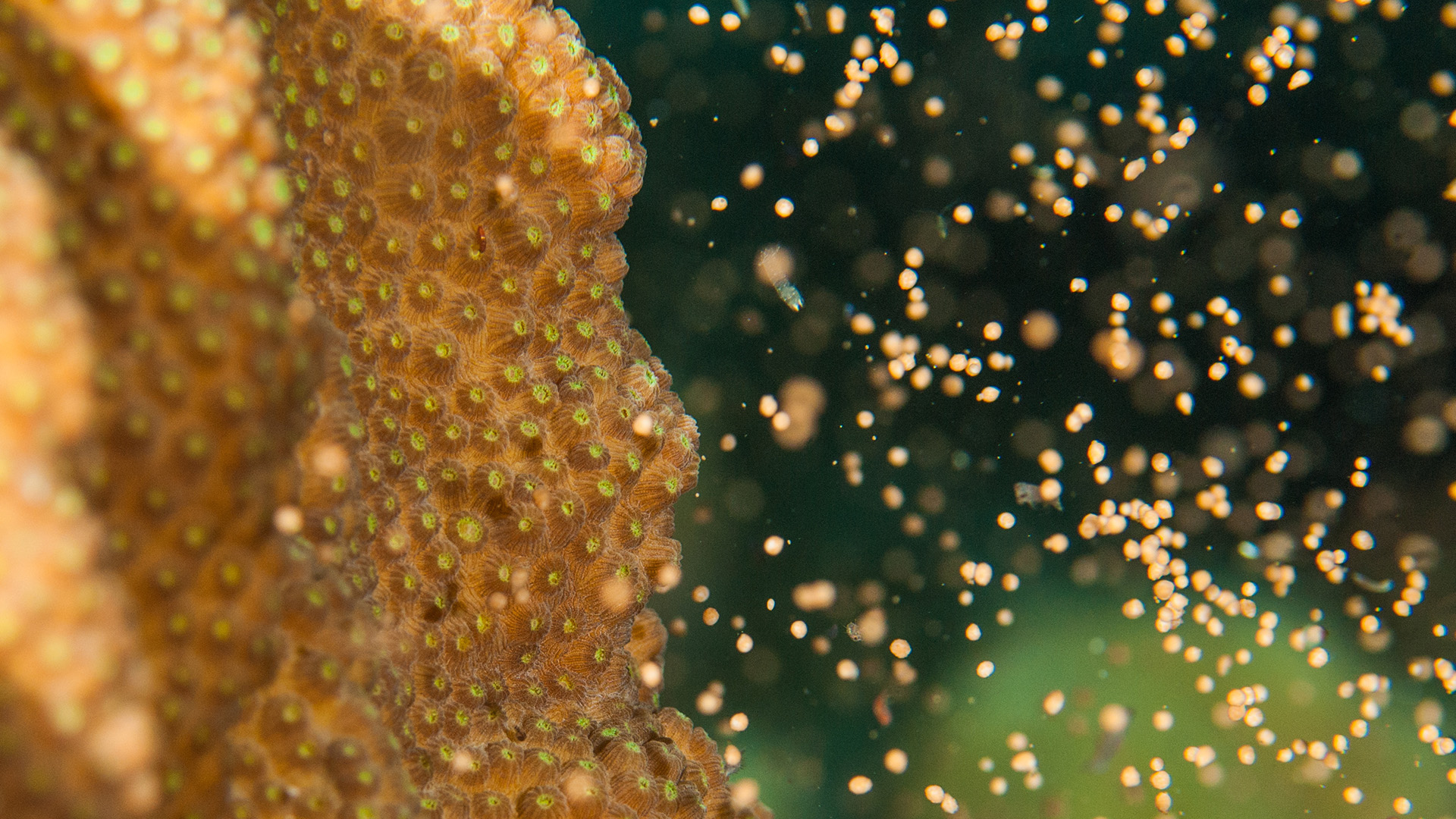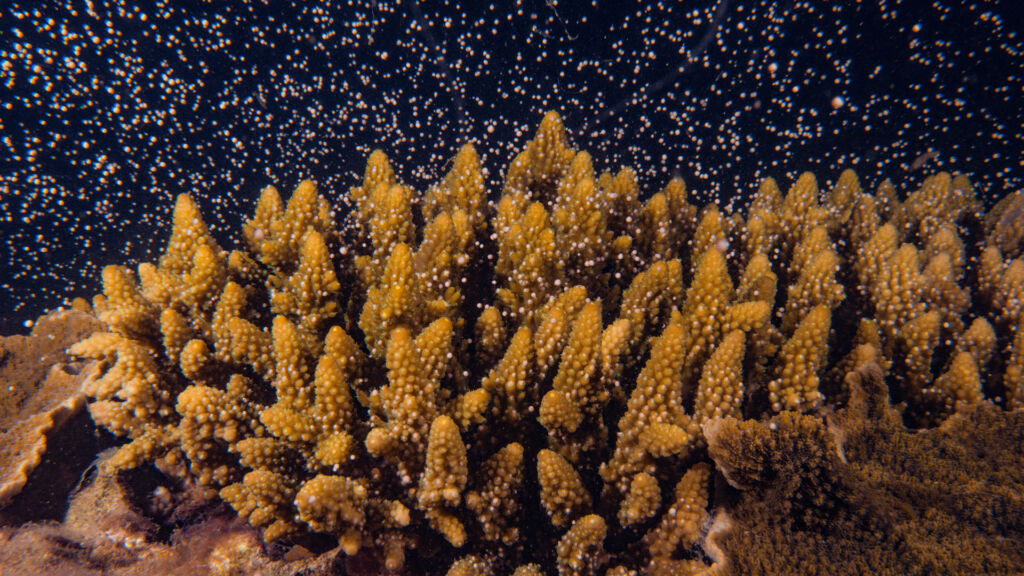Coral Spawning: What is it and how we can predict it
The Great Barrier Reef, one of the world’s most remarkable natural wonders, is renowned not only for its vibrant marine life but also for the mesmerizing phenomenon known as coral spawning. This annual event, which attracts divers and scientists from around the globe, offers a rare glimpse into the intricate and interconnected world of coral reproduction. In this article, we will delve into the fascinating world of coral spawning, its significance, and how experts predict when this magical spectacle will occur.
What is coral spawning?
Coral spawning is the annual reproductive event of most hard coral species. It is a synchronized release of eggs and sperm into the water, where they can fertilize and form new coral larvae. This breathtaking event, often likened to an underwater snowstorm, turns the coral reefs into a swirling palette of colours as millions of tiny, gamete-filled bundles are released into the ocean. It is a coordinated effort among various coral species, making it a fundamental element of coral health and reef survival.
What is the significance of coral spawning?
Coral spawning is crucial for the survival and growth of coral reefs. It contributes to genetic diversity, enabling corals to adapt to changing environmental conditions and resist threats like disease, pollution, and climate change. By replenishing the reef with new coral larvae, this process plays a vital role in the rejuvenation and resilience of the ecosystem. Moreover, it attracts scientists, divers, and nature enthusiasts all around the world, who are eager to witness and study this remarkable spectacle.
How can we predict when the coral spawning will happen?
Coral spawning is a highly synchronized event, with specific factors influencing when it occurs. Scientists have developed methods to predict the timing of coral spawning, allowing enthusiasts to plan their visits to witness this breathtaking event. According to the scientific team at JCU and GBRMPA, some of the key factors involved in predicting coral spawning include:
- Lunar Calendar: Coral spawning is typically tied to the lunar calendar, with most species releasing their gametes after the full moon.
- Time of Night: Coral spawning mostly happens at night to reduce the chances of predation on the released gametes.
- Water Temperature: Warmer water temperatures can trigger spawning. Typically, the water temperature needs to be within a certain range for the event to occur.
- Sea conditions: Calm seas are ideal for coral spawning, as they allow for better fertilization and larval dispersal.
- Species-Specific Factors: Different coral species may spawn at slightly different times, so experts take this into account when predicting the event.
It’s important to note that while scientists can make predictions, the exact timing of coral spawning can still be challenging to pinpoint with absolute precision, as natural factors can vary from year to year.
When is coral spawning of the Great Barrier Reef happening in 2024?
We do not have the predicted dates of the 2024 Coral Spawning yet – but we will update this page with the 2024 dates as soon as we know them!
How can I see the coral spawning?
Witnessing coral spawning is not only a testament to the wonders of the natural world but also a poignant reminder of the need to protect and conserve coral reefs. The Great Barrier Reef, with its annual coral spawning event, continues to be a source of inspiration and wonder for all who are fortunate enough to experience it.
There are several ways to witness it on the Great Barrier Reef. Tusa Reef Tours offers special coral spawning trips, where you can snorkel or dive to see this incredible phenomenon.
What is the conservation and preservation effects of coral spawning?
The beauty and significance of coral spawning serve as a powerful reminder of the importance of protecting these ecosystems. Coral reefs worldwide are under threat from climate change, ocean acidification, pollution, and overfishing. Witnessing coral spawning is not only a visual delight but a call to action for preserving these fragile ecosystems for future generations.


